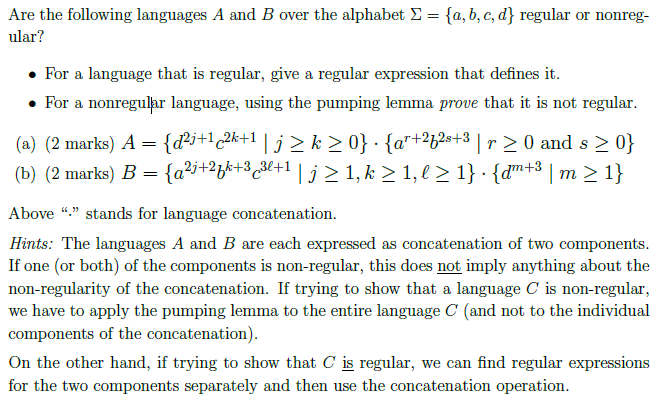Answered step by step
Verified Expert Solution
Question
1 Approved Answer
Are the following languages A and B over the alphabet = {a,b,c,d} regular or nonreg- ular? For a language that is regular, give a regular

Step by Step Solution
There are 3 Steps involved in it
Step: 1

Get Instant Access to Expert-Tailored Solutions
See step-by-step solutions with expert insights and AI powered tools for academic success
Step: 2

Step: 3

Ace Your Homework with AI
Get the answers you need in no time with our AI-driven, step-by-step assistance
Get Started


